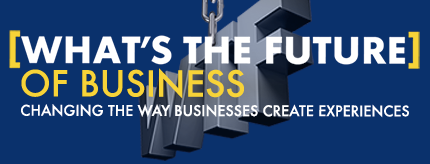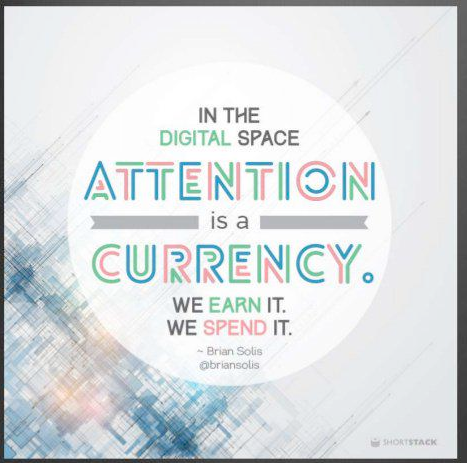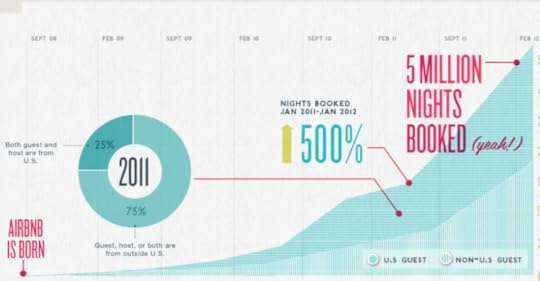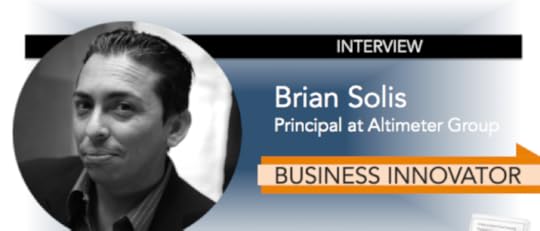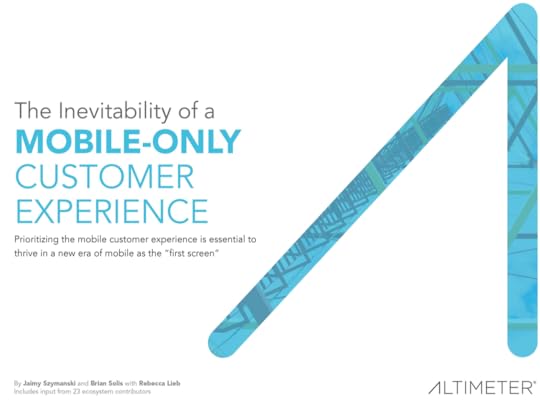Brian Solis's Blog, page 105
February 18, 2015
Companies Profit When Customers Suffer
You’ve heard it a million times, a happy customer tells a couple of people and an unhappy customer tells everyone. Yet to this day, executives tend to run business strategy with an emphasis on transactions over experiences. More so, business value is expressed in short-term performance metrics and reports to an audience of shareholders and stakeholders over the very people who keep them in business…your customers. It’s all a bit absurd when you think about it.
I know, I know…it’s only business. But, what if business were personal again?
The other day, I read an article that made my jaw drop. In fact, it’s still bruised from hitting the desk with such incredible force. The title of the piece hit home, which is why I clicked through without haste, “Why Airlines Want to Make You Suffer.” The article was written by Tim Wu for The New Yorker and in it, he shares the gut-wrenching but sense-making reality of why flying sucks and why the customer experience with many airlines comes down to three letters: WTF. Turns out there’s money to be made in not just transporting people around the world at 500 mph, that’s yesterday’s business model after all! Instead, squeezing customers for extra dollars in every way is part of a program airline executives employ that can be best described as “strategic suffering.”
See, the more a passenger hates the experience, the more they’re willing to pay incremental fees to avoid repeating it. That’s the theory anyway. These include the following uncommon anomalies some hopeless passengers may endure…
Waiting in line to check in at the counter.
Pushing your way through the cattle call when boarding commencing,
Clamoring for that last overhead bin space that someone else seems to always get.
Doing a last minute repack when you learn your bag weighs just over the maximum allotment.
Having to push their knees against the seat in front of them to mimic a comfortable seating position.
Tussling with your neighbor over space because seats are practically stacked on top of each other these days.
Beg to be treated as a human being by airline representatives.
Losing status because you fly a lot but you don’t pay premium prices for premium seats and services.
Indeed, we’ve all been there. As Wu notes in his article…
Hate the Flying Experience? You’re Welcome
Bill McGee, a contributing editor to Consumer Reports who worked in the airline industry for many years, studied seat sizes and summarized his findings this way: “The roomiest economy seats you can book on the nation’s four largest airlines are narrower than the tightest economy seats offered in the 1990s.”
So, why do we suffer this? Why do we tolerate such intentionally shoddy experiences? I believe the answer is as simple as it is profound. It’s because we have to. And if we don’t like it, we can pay for a better experience.
More seats means more revenue.
Wider seats with more legroom equals more revenue.
Guaranteed space in the overhead bin equates to more money.
You get the idea.
It’s not unlike the pain and misery consumers cope with to have the privilege of subscribing to cable or wireless companies. I laugh when I receive emails and txts from these faceless service providers asking if “I’m likely to recommend said company to someone.”
Um, how about no!?
The point is that customer experience should trump everything. Customers have preferences. They choose to support companies that appreciate them. And you know that we live in a sad state of affairs when good customer service makes us feel at ease. You know things are pathetic when today’s customers are willing to pay a premium just to avoid a negative experience.
Wall Street vs. Customer Experience
JetBlue for example has stood up for the everyday flyer over the years. It’s one of the reasons customers love the airline. In fact, they are loyal to the company simply because they’re valued and as such, the customer experience is at the heart of everything. As such, JetBlue refused to follow the pack of hoodlum airlines that colluded in the standardization of extra fees as part of this “strategic suffering” campaign. JetBlue was rewarded for this stance having posted consistent profits and a rising stock over the years while other greedy airlines have underperformed.
But no, the market, meaning Wall Street, won’t have it. They can’t see the benefit of customer experiences and the impact of positive reinforcement on the bottom line. I guess you can’t trade on something so fluffy. Instead, Wall Street analysts and shareholders alike accused JetBlue of being “overly brand-conscious and customer-focused.”
Cue the screeching brakes.
Wall Street has spoken and JetBlue CEO Dave Barger was replaced by Robin Hayes, someone Wall Street hopes is willing to embrace extra fees, narrower seats, and diminished customer experiences…unless they’re willing to pay for something better.
Stifel analyst Joseph DeNardi who pushed for the ouster of Barger celebrated the concerted moans of customers everywhere with a monologue worthy of a Bond villain, “JetBlue is in a nice position where it can do no wrong. Bad news is good news because they will be more likely to pursue a more shareholder friendly business strategy.”
If only shareholders flew like the rest of the people whose experience they’re deliberately compromising.
Now Hayes is wrestling with the balance between appeasing passengers and Wall Street.
To appease investors, Hayes recently announced that JetBlue will add a fee for the first checked suitcase. It’s estimated that this new perk (note the sarcasm) is estimated cash in an additional $200 million annually in the next two years. To ease passenger frustration and improve in flight customer experiences for those in economy, JetBlue will also add 15 seats to its current layout. Profits up. Legroom down. Why does personal space matter anyway?
The most interesting thing here is that JetBlue’s brand was built upon a foundation of customer experience. What happens when the experience dramatically (and intentionally) wanes?
Profits go up sure. But what happens over time? Brand value falls and shareholder value rises for a while. Then what?
It’s Time for Us to Go Our Separate Ways: It’s Not Me, It’s You
What if we cared enough about people to deliver incredible experiences that naturally fed profitable transactions? Said another way, what if we invested in customer experiences so that they were meaningful and more so, what if we rewarded customers not just for their business but also for their digital influence? That’s right, positive conditioning. Investing money, time and resources in the very thing that creates a community of customers willing to pay for a better customer experience at large?
See, investing in strategies that makes doing business with you so incredible eliminates or voids religious metrics such as Net Promoter Score (NPS).
It’s “would you refer someone?” vs. “did you refer someone?”
The answer comes down to the experience someone has and shares. That takes intent and design. Furthermore, the answer to either question should never be an unknown, a surprise nor assumed. The answer is designed as a result of the intentional investment made in meaningful and valued customer experiences. Any brand that places stakeholder or shareholder value above customer experience are simply out of touch with customer preferences, expectations and their power to demand something better. Because, given time and opportunity, they will.
Profit is important. But, a little empathy goes a long way. What starts with experience ends in long-term relationships. And, that’s priceless. People shouldn’t dread doing business with you. Nor should we make human beings pay to suffer a little bit less. In the end, customers and their experiences, are everything.
Connect with me… Twitter | LinkedIn | Facebook | Youtube | Instagram | Pinterest
Photo Credit: LIFESIZE / GETTY IMAGES via TIME
February 11, 2015
ContextMatters Episode 2: T.J. Miller and ‘Bitchgate’ and CNN’s Sex, Drugs and Silicon Valley
Welcome to the second episode of ContextMatters. My co-host Chris Saad and I are having fun recording this series. More so, we’re enjoying expanding the community beyond our world here in Silicon Valley to explore the things that affect business, tech and culture.
In this episode, we take out our macro lens to look closely at the strange fascination with what could best be described as Silicon Valley’s unconventional behavior.
Listen (also embedded below).
Schedule
Topic 1: We attempt to unravel the bizarre incident involving “Silicon Valley” star T.J. Miller at The Crunchies award show.
Context: T.J. Miller lambasted Uber CEO Travis Kalanick and his girlfriend (also an exceptional violist) Gabi Holzwarth with racist and sexist jokes from the stage. The 8th annual Crunchies, tech’s most infamous award show, will now also be known as “BitchGate.” It also made headlines at TMZ of all things and launched a Web-wide debate as to whether this behavior was offensive or whether Silicon Valley needs to get over itself.
Topic 2: Love is in the air. And according to CNN’s controversial new series, “Sex, Drugs and Silicon Valley,” there’s so much of it [love] in Silicon Valley that people are choosing non-monogamous relationships among other things.
Context: The new series hosted by Laurie Segall, has already broadcast episodes that explore the undercurrent of Silicon Valley relationships, swinging parties, psychedelics, smart drug use, burning man and more. Why? The answer is because it’s a big part of what makes the culture of Silicon Valley what it is for better or for worse.
Behind the Scenes Bonus Material: We interview one of CNN’s featured subjects on the topic of non-monogamy aka polyamory Chris Messina. Chris is also a dear friend of ours and is widely known globally for his creation of the popular #hashtag on Twitter and other social networks. He’s also a pretty amazing person. Listen (#NSFW).

Follow ContextMatters on: Soundcloud | Facebook | Twitter| iTunes
GetVOIP: The 35 Best Entrepreneur Blogs

GetVOIP published a list of the “35 Best Blogs” to help entrepreneurs pursue their dreams. Brian Solis was ranked number 1.
Excerpt:
The road of the entrepreneur can be challenging and exhilarating, frustrating and isolating, inspiring and exhausting, sometimes all in the same week. For people invested in starting their own business, the perspective of others who have been there, who are there right now, can be invaluable. Blogs play a huge role in sharing information, opening up experiences, and encouraging entrepreneurs to take risks and work smarter. But wading through the thousands of blogs out there to get to the really good stuff is a daunting task. To get your 2015 blogroll off to a great start, we’ve rounded up a list of excellent blogs aimed at small businesses just getting started. In no particular order, here are 35 of our favorites.
1. Brian Solis
Blogger, author, speaker and self-proclaimed digital analyst/anthropologist/futurist Brian Solis has a lot to say about how disruptive technology intersects with our lives, both in business and in society as a whole. He works at the principal of the Altimeter Group, a research and advisory firm.
Click here for the rest of the list.
February 9, 2015
Attention is a Precious Commodity: Earn it and Spend it Wisely
There’s an oft-shared quote that I’d also love to share with you here, “If I had more time, I would have written you a shorter letter.” French mathematician, physicist, writer and philosopher Blaise Pascal essentially captured the essence of thoughtful and purposeful communication with a bold but confusing statement in 1657.
At first blush, his words almost seem counter-intuitive. I mean after all, how can spending more time writing a letter equate to its downsizing?
That’s the point.
That’s the elusive yet magical nature of this attention economy. And, it’s both a challenge and also an opportunity to compete in it and for it.
In a digital world, we, you and me, have created an incredible human network. We each part of it and we each model it. In many ways, Gutenberg’s press democratized information by allowing enterprising individuals and groups to produce tangible and shareable content at scale. That was 1439. Of course, digital has only made the platform for moveable type and the ability to create and publish content far more efficient. The ability to create and distribute information is now pervasive. It’s easy, maybe too easy.
I used to say that news no longer, it Tweets. Information shared on Twitter, when the network effect kicks in, spreads faster than the world has ever known. In some cases, even the most remote news can break around the world in minutes. This is the power and the awe-inspiring nature of the human network, the fastest, most efficient way for information to spread while making its way to those who are looking for or open to it.
This human network, those individuals connected by the relationships they form across social networks, online communities and mobile apps, complements the freedom and ubiquity of content creation with a global, high-speed, always-on peer-to-peer or human-to-human distribution network. That’s the allure and fascination of this social media.
Information finds its way to people through other people at implausible speeds. It’s a network effect I refer to as connecting social objects to audiences with audiences with audiences of their own. And what makes it so fascinating is that as information travels across networks, the common interests that form every relationship qualifies and routes any given topic to those who would or could find it interesting or relevant. This amazing efficiency will only advance with technology and practice.
For the people by the people. That’s what this is about.
No more sucking from the exhaust pipe of big media or corporate content engines. Now we are the press. And to be honest, this is both a blessing and a curse.
But with social media comes great responsibility.
Information is power as they say. In an odd twist of fate though, it is this ability to readily publish, share and remix information, that can contribute to a diminishing return on relationships. That’s not what this is about.
Sometimes we move too quickly.
What we find interesting and in turn share through our networks contributes the nature and state of our relationships. Just because we have the ability to share doesn’t mean we should do so without regard or intention.
These marvelous relationships in which we forge and invest blossom into living and breathing organisms that reach and touch people around the world. When you stop and think about it, it’s all pretty wonderful. What we share and create sparks engagement, communication and collaboration. And what’s truly inspiring about all of this is that those interactions and the value of the communities in which we invest are OURS to define and shape.
As my friend Steve Rosenbaum believes, by sharing what’s interesting to us must also find interest in those with whom we’re connected. This thoughtful sharing creates a curation nation where the relationships and the byproduct of our connections is not only valued by all who contribute to the community, over time it helps us grow as individuals.
We learn. We discover. We gain perspective. We garner new insights. In turn, what we share and how we share it contributes to the enlightenment and entertainment of those around us. We develop and progress as people and as a group simply by what we share and how we participate.
This brings me back to Blaise Pascal. Our communities are defined by the sum of what we create, curate and collaborate. By spending more time before doing so, taking into consideration the very people we wish to engage, we strengthen our personal relationships while also upgrading the global potency of the human network.
And I think to myself, what a wonderful world…this could be.
To create is divine.
To curate is human.
The preceding work is an alternate foreword I wrote for Steve Rosenbaum’s latest book, “Curate This,” which helps readers learn the ins and outs content curation. The final foreword that made it to print can be read here.
Connect with me… Twitter | LinkedIn | Facebook | Youtube | Instagram | Pinterest
February 5, 2015
Why is AirBnB Singled Out by Government When Web 1.0 Competitors are Ignored?
Bloomberg’s Christian Thompson recently published a story on AirBnB and how it is and isn’t different than many Web 1.0 sites such as HomeExchange or HomeAway. Although only one or two lines from our discussion made the final story, the question and the answer are significant enough to share in this short post.
Bloomberg: My question was why an outfit like Airbnb gets all this heat when something like Home Exchange doesn’t? My French in-laws use it all the time to swap their apartment in Nice with someone’s abode here in the states, and it doesn’t seem like there’s any noise about that. Is there a difference, real or perceived, in the eyes of the law or regulators, between those two kinds of operation?
Brian Solis: HomeExchange, specifically, is a very popular service that plays by Web 1.0 rules. Its users are Web savvy and also understand the home exchange/property rental game. If you think about it, exchanging homes is a very specific usage application where people get something for something where money is usually out of the transaction. An exchange is an uncomplicated way to participate in the sharing economy. I’d argue that AirBnB though is not sharing or collaborative, it’s good ole fashioned renting. As such, it opens up new doors to complicated financial and legal scenarios that the company and its early adopters under estimated or overlooked.
Some people are renting properties that violate their leases. Others are evicting long term tenants to turn assets into short-term rental profit centers. An unfortunate user or two learned the hard way about renting out property longer than 30 days and the issues that opens up especially in California. A few have had their rental properties trashed only to find out that AirBnB wasn’t going to help. The list goes on and on.
AirBnB opened up the short term rental market to owners and lessees which meant that a lot of people were figuring things out en masse all while playing out challenges and issues in the public spotlight. For better or for worse, these experiences served as the foundation for great PR for the company which of course earned the attention of regulators, lawyers and the like.
Connect with me… Twitter | LinkedIn | Facebook | Youtube | Instagram | Pinterest
February 4, 2015
ContextMatters Episode 1: Uber, Microsoft HoloLens and Why “Women Shouldn’t Code”
I’m proud to introduce you to “Context Matters,” a new podcast hosted by my good friend Chris Saad and yours truly. This is a long time in the making and we finally committed to this series as a long-term program.
Context Matters explores discussions at the intersection of business, technology and culture. My co-host, Chris Saad (@ChrisSaad) is a geek at heart and a long-time player in the startup community. Saad the co-founder of The Echo Experience Studio and spends his time building products, ecosystems, standards. He also starts and advises many startups.
Our premier episode tackles some very timely and in some cases sensitive subjects including Uber, Microsoft HoloLens and why “Women Shouldn’t Code.” Before you react to the last part, take a listen. It’s in quotes because it’s in reference to a headline of a controversial article we discuss.
Episode 1 Table of Contents:
Topic 1: Uber is evolving its pitch to “Job creator” and “Environmental champion”
Context: ReCode and BusinessInsider
Topic 2: Microsoft announces HoloLens. How does it compare and contrast with Google Glass and Oculus Rift? Where will this kind of technology go?
Context: The Verge
Topic 3: Why Women Should Code
Context: “Women Shouldn’t Code” – At least according to Francine Hardaway (Note: It doesn’t play out like the headline suggests) and Rebuttal by Kelly Ellis
Follow ContextMatters on: Soundcloud | Facebook | Twitter| iTunes
February 3, 2015
To Deliver a Great Customer Experience, Stop Focusing on the Customer You Think You Know
Guest post by Rajat Paharia (@rajatrocks), founder and chief products officer, Bunchball and author of Loyalty 3.0: How to Revolutionize Customer and Employee Engagement with Big Data and Gamification
2015 promises to be The Year of Customer Experience. Companies around the globe are resolving to become more customer-centric because, as Brian lays out quite eloquently in his book:
“Now’s the time for an investment in something more than price, performance, or value. The future of business is about creating experience, products, programs, and processes that evoke splendor and rekindle meaningful and sincere interaction and growth.”
However, I find that when marketers talk about customer experience, most tend to focus exclusively on the buyer, the customer. The discussions revolve around questions like “What does the customer want/need/prefer?” and “How can we improve customer engagement?”
That’s unfortunate.
Yes, you read that correctly. I’m writing today to tell you that while focusing on the customer is extremely important to any business’s long-term strategy, focusing on the customers’ wants alone is not. Furthermore, when you continually emphasize customers above all others, you run the very real risk of ignoring the most critical component of the larger service-profit chain: engaged employees.
Sure, satisfied, loyal customers are essential to profitability. But make no mistake about it: The entire service-profit chain begins with, and absolutely depends on, engaged employees.
“Engaged employees.” Who are they? They’re the kind of employees who are motivated to do well. They’re involved, invested, well-trained – and because of all those things, they make customers happy. Companies can spend millions on splashy marketing campaigns designed to attract customers, but at the end of the day, employees are the ones who make – or break – the customer experience.
Now you’re probably thinking, “Okay, I get it. Companies need engaged employees. Fine. What’s the problem?”
Here’s the problem: By and large, engaged employees are an endangered species. Very few currently exist, and in a world that’s becoming ever more complicated and full of distractions, they’re becoming increasingly rare. As Brian pointed in December, employee engagement is at an all-time low. Gallup found that only 13 percent of workers actually feel engaged at their jobs. Even worse, 63 percent of workers are not engaged at all.
If employees aren’t engaged, they’re not invested in the customer experience. So, no matter what your marketing campaign tells your customers, and no matter how you try to engage them, the whole experience is likely to fall flat – because most employees can’t deliver. They aren’t adequately trained (and/or updated). They aren’t properly incentivized. They aren’t responsive. And they aren’t motivated.
Fortunately, there is something you can do to change all that. It’s called gamification.
Gamification is about using data to motivate people, and these days, nearly everything we do at work (and everywhere else!) has data associated with it. Therefore, employers can now leverage data generated in the workplace to gain insights into business performance. In short, gamification enables employers to motivate the employee behaviors needed to drive a great customer experience.
Some of you may read the term “gamification” and dismiss it as something to do with games, meaningless badges and prizes, or otherwise tricking people. But that’s not true gamification. Done right, gamification is a powerful business tool, and companies around the world are using it to improve performance across a wide range of parameters. Throughout the year, you’re going to be hearing more and more about successful gamification initiatives, the kind that are:
Based on business strategy. To be effective, a gamification platform must tap into your employees’ intrinsic motivators. Plus, it has to marry these motivators to your particular business strategy. In other words, you need to make sure you’re inspiring the right behaviors, the ones that will help you achieve your goals – not the behaviors that reward short-term successes at the expense of long-term business objectives.
Integrated. Why reinvent the wheel? As I already mentioned, modern employees are walking data-generators. An effective gamification platform includes technical integrations that pull data into/from the systems you already have in place (your point of sale system, your system for employee performance reviews, etc.).
Grounded in analytics. A gamification platform must be able to measure business impacts, and it must be scalable and sustainable. An effective gamification platform offers continual motivation, real-time feedback, performance gains and business insights.
How does this all come together to improve the customer experience? Check out these recent results:
In order to provide superior customer support and issue resolution, a major telecommunications company needed to motivate customer care and retail representatives to make the company’s online social business community their go-to resource for knowledge-sharing. After incorporating a gamification platform, the company increased employee participation by 1,000 percent and engaged more than 30,000 frontline representatives, empowering them to more effectively respond to customers’ queries. This increased engagement translated to improved customer care, as illustrated by a 6,000 percent increase in the “likes” awarded for helpfulness and accuracy on peer responses to community questions.
In another example, managers at a major manufacturer wanted to improve the effectiveness of training resources and drive informal learning for sales and service reps across 450 store locations. After they integrated gamification into the company’s Learning Management System, site usage increased 417 percent versus the same period the previous year. Engagement and volunteer learning rose dramatically, too, with many participants completing courses above and beyond the requirements for annual certification. In addition, the company found a positive correlation between engagement and key performance measures – the top 10 percent of those who participated in the gamification program saw a 15-18 percent increase on in-quarter sales and also improved customer satisfaction metrics.
As you can see from these examples, gamification is not one-size-fits-all. To be effective, your gamification platform must be customized to your business and your people. It must capture the right data and provide the right insights. Then –and only then –you’ll be able to use gamification to truly motivate your employees to deliver an exceptional customer experience. And hopefully, I’ve convinced you that that’s now what is at the core of successful marketing. In 2015, and going forward from there, any company that wants to stay competitive will have to offer an exceptional customer experience, the kind that only engaged employees can deliver.
Image Credit: Shutterstock
To Deliver a Great Customer Experience, Stop Focusing on the Customer
Guest post by Rajat Paharia (@rajatrocks), founder and chief products officer, Bunchball and author of Loyalty 3.0: How to Revolutionize Customer and Employee Engagement with Big Data and Gamification
2015 promises to be The Year of Customer Experience. Companies around the globe are resolving to become more customer-centric because, as Brian lays out quite eloquently in his book:
“Now’s the time for an investment in something more than price, performance, or value. The future of business is about creating experience, products, programs, and processes that evoke splendor and rekindle meaningful and sincere interaction and growth.”
However, I find that when marketers talk about customer experience, most tend to focus exclusively on the buyer, the customer. The discussions revolve around questions like “What does the customer want/need/prefer?” and “How can we improve customer engagement?”
That’s unfortunate.
Yes, you read that correctly. I’m writing today to tell you that while focusing on the customer is extremely important to any business’s long-term strategy, focusing on the customers’ wants alone is not. Furthermore, when you continually emphasize customers above all others, you run the very real risk of ignoring the most critical component of the larger service-profit chain: engaged employees.
Sure, satisfied, loyal customers are essential to profitability. But make no mistake about it: The entire service-profit chain begins with, and absolutely depends on, engaged employees.
“Engaged employees.” Who are they? They’re the kind of employees who are motivated to do well. They’re involved, invested, well-trained – and because of all those things, they make customers happy. Companies can spend millions on splashy marketing campaigns designed to attract customers, but at the end of the day, employees are the ones who make – or break – the customer experience.
Now you’re probably thinking, “Okay, I get it. Companies need engaged employees. Fine. What’s the problem?”
Here’s the problem: By and large, engaged employees are an endangered species. Very few currently exist, and in a world that’s becoming ever more complicated and full of distractions, they’re becoming increasingly rare. As Brian pointed in December, employee engagement is at an all-time low. Gallup found that only 13 percent of workers actually feel engaged at their jobs. Even worse, 63 percent of workers are not engaged at all.
If employees aren’t engaged, they’re not invested in the customer experience. So, no matter what your marketing campaign tells your customers, and no matter how you try to engage them, the whole experience is likely to fall flat – because most employees can’t deliver. They aren’t adequately trained (and/or updated). They aren’t properly incentivized. They aren’t responsive. And they aren’t motivated.
Fortunately, there is something you can do to change all that. It’s called gamification.
Gamification is about using data to motivate people, and these days, nearly everything we do at work (and everywhere else!) has data associated with it. Therefore, employers can now leverage data generated in the workplace to gain insights into business performance. In short, gamification enables employers to motivate the employee behaviors needed to drive a great customer experience.
Some of you may read the term “gamification” and dismiss it as something to do with games, meaningless badges and prizes, or otherwise tricking people. But that’s not true gamification. Done right, gamification is a powerful business tool, and companies around the world are using it to improve performance across a wide range of parameters. Throughout the year, you’re going to be hearing more and more about successful gamification initiatives, the kind that are:
Based on business strategy. To be effective, a gamification platform must tap into your employees’ intrinsic motivators. Plus, it has to marry these motivators to your particular business strategy. In other words, you need to make sure you’re inspiring the right behaviors, the ones that will help you achieve your goals – not the behaviors that reward short-term successes at the expense of long-term business objectives.
Integrated. Why reinvent the wheel? As I already mentioned, modern employees are walking data-generators. An effective gamification platform includes technical integrations that pull data into/from the systems you already have in place (your point of sale system, your system for employee performance reviews, etc.).
Grounded in analytics. A gamification platform must be able to measure business impacts, and it must be scalable and sustainable. An effective gamification platform offers continual motivation, real-time feedback, performance gains and business insights.
How does this all come together to improve the customer experience? Check out these recent results:
In order to provide superior customer support and issue resolution, a major telecommunications company needed to motivate customer care and retail representatives to make the company’s online social business community their go-to resource for knowledge-sharing. After incorporating a gamification platform, the company increased employee participation by 1,000 percent and engaged more than 30,000 frontline representatives, empowering them to more effectively respond to customers’ queries. This increased engagement translated to improved customer care, as illustrated by a 6,000 percent increase in the “likes” awarded for helpfulness and accuracy on peer responses to community questions.
In another example, managers at a major manufacturer wanted to improve the effectiveness of training resources and drive informal learning for sales and service reps across 450 store locations. After they integrated gamification into the company’s Learning Management System, site usage increased 417 percent versus the same period the previous year. Engagement and volunteer learning rose dramatically, too, with many participants completing courses above and beyond the requirements for annual certification. In addition, the company found a positive correlation between engagement and key performance measures – the top 10 percent of those who participated in the gamification program saw a 15-18 percent increase on in-quarter sales and also improved customer satisfaction metrics.
As you can see from these examples, gamification is not one-size-fits-all. To be effective, your gamification platform must be customized to your business and your people. It must capture the right data and provide the right insights. Then –and only then –you’ll be able to use gamification to truly motivate your employees to deliver an exceptional customer experience. And hopefully, I’ve convinced you that that’s now what is at the core of successful marketing. In 2015, and going forward from there, any company that wants to stay competitive will have to offer an exceptional customer experience, the kind that only engaged employees can deliver.
Image Credit: Shutterstock
January 26, 2015
Make Change Work for You: The Power of Observation
I’m a pretty private person usually. From time to time though, I share stories about my past to help others take their next step. This is one such case. Scott Steinberg is a good friend and the other of several books including his most recent title, Make Change Work for You. We chatted recently about lessons learned over the years.
I wanted to share our conversation with you here…
Scott Steinberg: You’ve been tremendously successful in your career. Would you call yourself an overnight success?
Me: In 1991, I joined an advertising technology firm in Southern California as a database architect. I was building these efficient databases around a paper-based system, which their marketing team used to track publication data for media buying purposes. At the time, I was sort of in awe of how little my colleagues knew about technology, and its impact on business. So I went to the president of our agency and asked if I could help add a technology perspective to some of our marketing programs. Shockingly, he said yes. That’s where it all began.
While I didn’t go to school for marketing, I knew what technology could do and I was very motivated by the performance metrics used in traditional marketing. Eventually, I was offered an opportunity at a big PR firm in Silicon Valley that was too good to pass up. I didn’t know much about PR, but I offered unique technology perspective and that led to some unconventional success.
But that was just the beginning. From there I went on to start a new tech marketing firm which ran for about 12 years, partnered with Ashton Kutcher on new marketing programs for the United Nations, Oprah, among others, joined Altimeter Group as a Principal Analyst and advised hundreds of tech startups and wrote several books along the way.
So yes, it’s been an overnight success 20 plus years in the making. But, in all seriousness, success is elusive. The most successful people I know wouldn’t say they’re successful. They always have something more to do.
Q: You said you were programming, were you self-taught?
I taught myself when I was a young kid. I was mowing grass and washing cars as a 12 year old to save up for my first PC. I then studied key languages, key at the time that is, in high school. From there, I geeked out on everything tech and continue to do so.
Q: How did you survive the dot-com bubble and the subsequent downturn?
There wasn’t as much demand during the dark times. You had to be creative. You took your retainers, but you also had to show that you would deliver dividends. There was an emotional element too, I went from 40 to 20 people and it was heartbreaking. In order to keep yourself going, you have to fight another fire — mine was a passion for changing the world of marketing and business. I probably don’t look back enough because I’m always moving forward…sometimes too quickly.
Q: Do you think that’s the case for most people, that the corporate ladder is straight up or is it more of a zig-zag?
It’s not a ladder designed to go one way to be successful. You have to go up and down and across. As a young adult, maybe your dream is one thing and it’s something different later. Happiness is not defined the way it was for our parents, and I think younger people are starting to realize that. We’re living in an economy where people aren’t even buying cars anymore. They’re not buying houses because they’re too ridiculously expensive, so they’re renting or subletting. There’s more freedom to explore what makes you happy.
Q: What has been the scariest point in your career?
When I started FutureWorks in 1999, I was terrified. I had a 3 year old son at the time. I was leaving a promising gig. At the same time, I was undertaking what would then be a tremendous lifestyle change at a time when I thought I had “made it.”
Failure is part of everything. You have to fail. And if you don’t, you’re probably not trying enough new things. The key is that you have to try enough so there are greater successes relative to the failures. Throughout my career, I haven’t thought of failure as scary, because I was on a mission. Once you start pushing for things to happen, you create your own destiny. That’s the truth. If you are pushing against a purpose, people will recognize that and support it.
Q: What advice would you give to someone who feels stuck in their career?
I’m an introvert, and I still can’t work a room to this day. I’m not a good self-promoter. But one of my gifts as an introvert is the power of observation. Observe what is happening around you and decide where you want to be. Where I am now, and where I want to be, is separated by my actions and words. As an introvert, one of the things I learned by participating in online communities is there’s a sense of confidence that spills online into the real world. If you look at the true power of knowledge, it’s not just what you learn in the classroom, it’s the power of observation. If you let what you see touch you, once you feel it, you’ve also been given the gift of empathy.
Connect with me… Twitter | LinkedIn | Facebook | Youtube | Instagram | Pinterest
January 22, 2015
Report: Some Brands Go All In on Mobile; Others Suffer from Mobile Mediocrity
Consumers aren’t just going digital, they’re also becoming increasingly mobile. To them, mobile isn’t the second screen, it’s the first screen. Brands however, struggle to keep up with them and as a result, mobile strategies are off target or underwhelming.
This finding among many others is the result of new research conducted by my colleague Jaimy Szymanski and me. I’m proud to announce that the report, The Inevitability of a Mobile-Only Customer Experience, is available today for immediate download.
Mobile CX: Digital First and Mobile First
After spending several months interviewing brands such as Starbucks, MasterCard, Nespresso, Starwood and 19 other leading companies, we learned that while there’s significant progress in mobile, there’s still a lot of work ahead.
Today, there is a tug-of-war between digital first and mobile first approaches in customer experience. What if they were mutually exclusive? What if brands invested in digital first and also mobile only customer journeys?
Digital transformation needs a sense of urgency and that’s where champions are desperately needed. Our research shows that digital or mobile first isn’t good enough. For many companies, mobile technology further fragments the customer experience.
90% of consumers move between devices to accomplish a goal, using an average of three different screen combinations each day. At some point, multiscreen fatigue will force consumers to abandon any customer journey that doesn’t prioritize mobile only experiences.
We all know that digital is a priority for brands. We also know that strategists still struggle to get executive support and necessary resources and budget to make critical moves as the digital landscape continues to evolve. But if we are to create a sense of urgency, we must understand that as mobile becomes the first screen, the entire journey must be reimagined. As it is, the digital customer journey largely exists as a remnant from the days of Web 1.0.
As mobile consumers become more and more proficient at navigating customer journeys via the small screen, they are learning how to bypass outmoded touchpoints. By not truly understanding mobile customer behavior, brands cannot invest in a meaningful mobile customer experience. This causes friction and forces consumers to multiscreen and/or channel hop instead of going through the funnel or their journey with ease and delight. As such, mobile CX is of vital importance if brands are to succeed in the digital economy.
Somewhere along the way, mobile strategy simply became an extension of all things digital. But mobile consumers are far more sophisticated then we know. And, forcing them through digital paths that were meant for bigger screens and point-and-click navigation completely misses critical engagement opportunities. Instead, mobile CX must complement digital customer experiences AND provide a dedicated journey unto itself. Doing so caters to those who prefer, or only know, life through a smaller window where they navigate differently and for more intuitively through a pinch and zoom, swipe, tap and hold, user experience.
To win among mobile- and digital-first customers, brands must focus on learning more about the mobile journey as it exists and how it could exist. This includes understanding customer frustrations, expectations, and behaviors specific to mobile. When done in parallel to other digital investments, mobile (in each of its forms) becomes both a self-contained and complement experience to the digital/traditional journey. Only then can mobile CX be truly customer centric because you take into view the needs, expectations and behaviors of digital and mobile customers.
Please download the report today.
Connect with me… Twitter | LinkedIn | Facebook | Youtube | Instagram | Pinterest


